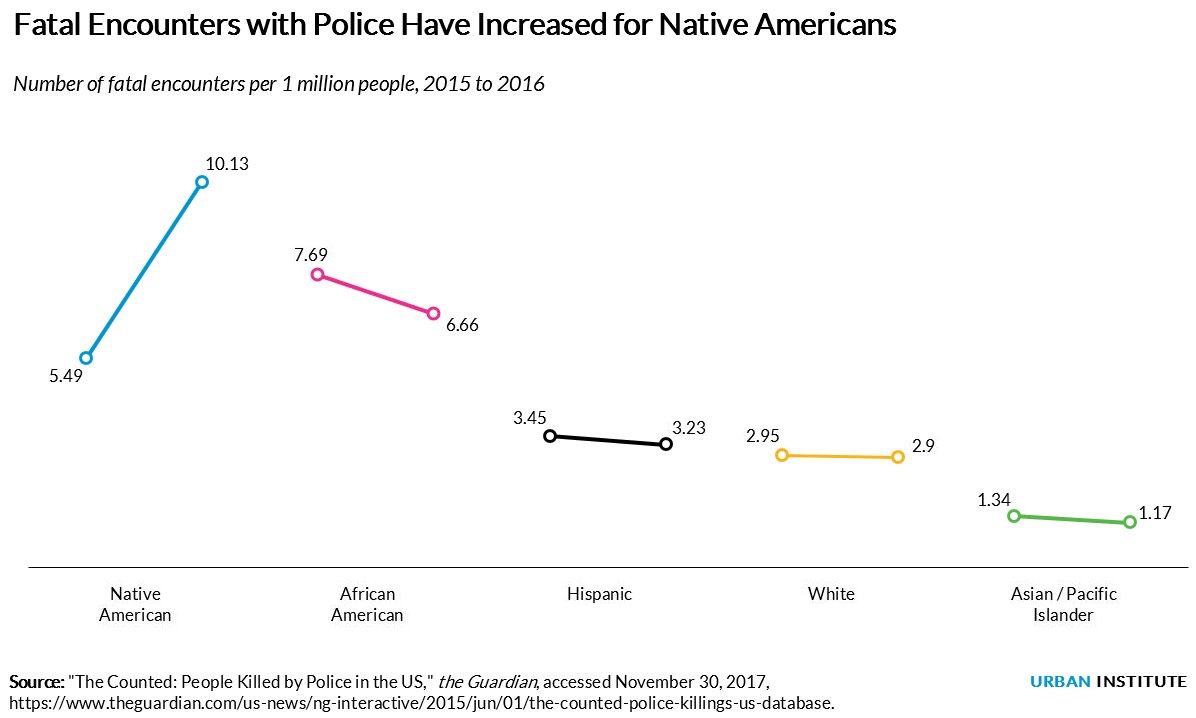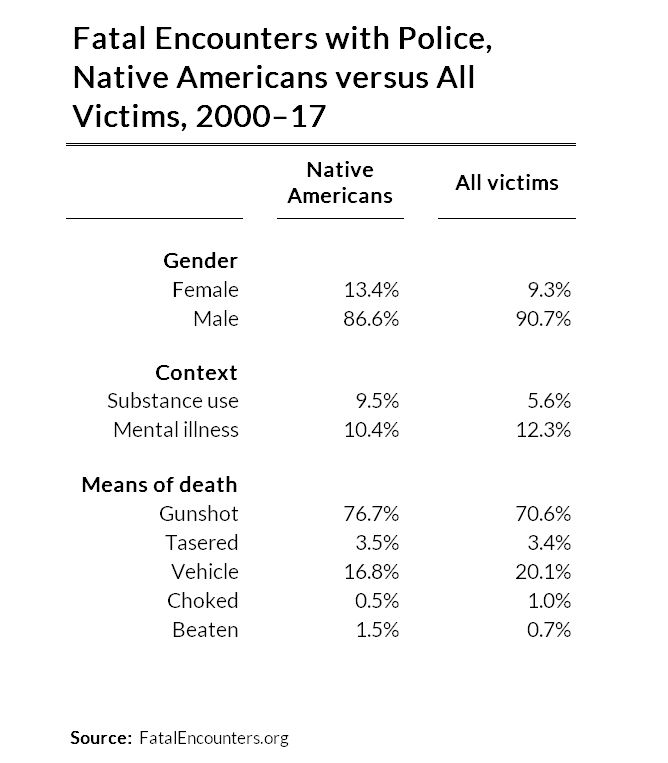
Photo by Jessica Rinaldi/The Boston Globe via Getty Images.
On Wednesday, November 8, in northern Wisconsin, 14-year-old Jason Pero was killed by officers from the Ashland County Sheriff’s Office responding to a call that someone on the streets had a knife. As with many officer-involved shootings, the incident sparked questions, including why the officers used lethal force for a boy with a knife.
The issue of officer-involved shootings has entered mainstream discourse, but it has focused on the African American population, largely because of the #BlackLivesMatter movement. But Native Americans suffer from police violence at an equal or even higher rate. Pero was a member of the Bad River Chippewa tribe, and the shooting occurred on the Bad River reservation. The Pero case was the latest of at least 19 Native Americans shot or tasered by police in 2017. But these incidents rarely make it into headlines.
We must pay attention to police violence against this neglected community and not just during Native American Heritage Month.
A lack of reliable data
We don’t know how many Native Americans are subject to police violence, mainly because there is little information available about police violence in general. We don’t even know how many people die at the hands of law enforcement.
Official data on police violence are available from the Centers for Disease Control and Prevention and from the Federal Bureau of Investigation, but these sources undercount fatal encounters among all racial and ethnic groups. This leaves the full scope of the problem’s size and prevalence unknown. Even with data collection issues, these sources show that Native Americans are killed at a higher rate than any other racial or ethnic group.
In response to the lack of reliable data, several newspapers, including the Washington Post and the Guardian, began collecting their own data on the number of officer-involved shootings beginning in 2015. In 2016, Native Americans had the highest prevalence of fatal encounters with the police out of any racial or ethnic group.

Between 2015 and 2016, the number of fatal encounters for African Americans dropped from 307 to 266, while the number of fatal encounters for Native Americans rose from 13 to 24. From January to October 2017, 22 Native Americans and 281 African Americans were killed in encounters with police.
Potential factors at play
The largest database, in years covered and completeness of count, comes from Fatal Encounters, a website started by Brian Burghart, formerly of the Reno News & Review. The site collects fatal encounters dating back to January 2000. Using this database, we can compare the characteristics of Native American victims with all victims of police violence.

When taking the context of the police encounter into consideration, Native American fatalities tend to align with those of all victims, with the exception of substance use. Excessive alcohol consumption has a greater health impact on Native Americans than on any other racial group, which could be a factor in fatal police encounters.
Jurisdictional issues and the dynamics between tribal police and state and local law enforcement are also likely to contribute to Native Americans facing a higher risk of fatal encounters with the police. Although most reservations have their own tribal police departments, they are also policed by state and local agencies. In fact, tribal policing is only a recent phenomenon, with the passage of the Indian Self-Determination and Education Assistance Act of 1975, which established criminal justice responsibilities among the tribes. But Public Law 83-280 (PL-280) enables law enforcement agencies in certain states, instead of federal authorities or the tribes, to enforce criminal law.
Wisconsin, where Jason Pero was killed, is a PL-280 state. The officers who responded to the call were not part of the tribal police department. The outcome might have been different had the situation been handled by a tribal authority.
Let’s build a future where everyone, everywhere has the opportunity and power to thrive
Urban is more determined than ever to partner with changemakers to unlock opportunities that give people across the country a fair shot at reaching their fullest potential. Invest in Urban to power this type of work.